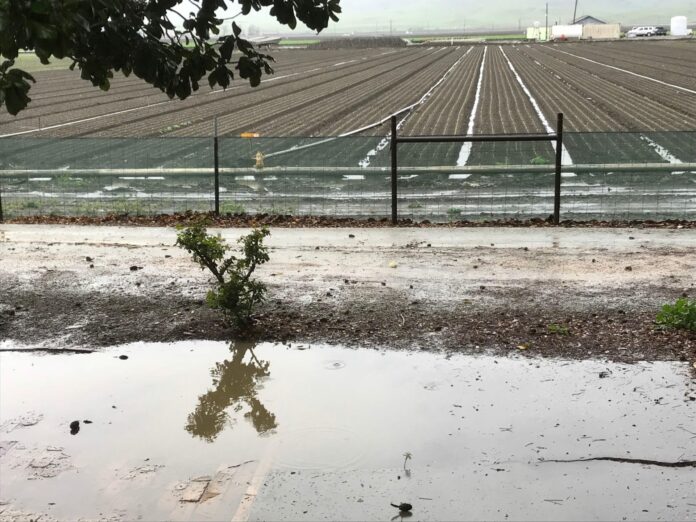It has been an up and down rainy season when it comes to precipitation totals in San Benito County.
The first half of the rainy season that runs October through March started off slowly for the county before the recent series of storms.
Up to Jan. 7, San Benito County had 6.78 inches of rainfall at the San Benito County Water District’s rainfall station, while rainfall totals can fluctuate around the county. An average year historically for the Hollister area is around 13 inches, said Shawn Novack, water conservation program manager for the Water Resources Association of San Benito County.
“I was getting a little worried before the Christmas break,” Novack said.
Novack said since the wet rainy season two years ago when 22 inches fell, San Benito County has been relatively dry, enough so to deplete a good portion of the water storage built up during that 2016-17 rain year.
One example is Hernandez Reservoir in south county, which captures water from the highest point in the county, Mount San Benito at 5,100 feet. Currently, it has 500 acre-feet of water, while the capacity of Hernandez is 18,000 acre-feet, Novack said. He said the district has been slowly letting out Hernandez Reservoir’s water, which runs down the San Benito River through Hollister. That water helps to percolate into the groundwater system and replenish wells.
Still, the snowpack “looks pretty good,” Novack said. As of early December, the Sierras were 104% of normal. This is important since snowpack makes up almost 30% of the water supply for California, Novack told San Benito Live.
The district won’t know its annual allocation from the United State Bureau of Reclamation, meanwhile, until late March or early April, Novack said. The water is stored at San Luis Reservoir for Santa Clara and San Benito counties.
On the analytical side of the water issue, Novack said the annual groundwater report for the Gilroy-Hollister Basin was just assembled and will presented at a special board meeting Monday. After an approval, it would be published.
According to an executive summary for the report provided by Novack, 2018 was a dry year.
“However, Central Valley Project (CVP) water allocations for agriculture and for municipal uses for March 2017-February 2018 were set at 100 percent of the contract and for March2018-February 2019 were set at 50 percent and 75 percent respectively. The District is using this available imported water, providing it to agricultural users, treating CVP water in the newly-expanded Lessalt and newly-completed West Hills water treatment plants for municipal users, and percolating CVP water in off-stream ponds. In 2018, groundwater elevations generally rose across the basin,” an excerpt in the report reads.
Rain totals for current rainy season by month as provided by Novack:
| Oct ‘18 | 1.64 inches |
| Nov ‘18 | 3.23 inches |
| Dec ‘18 | 1.44 inches |
| Jan. 1-7 | .47 inches |
| Total = 6.78 “ |





